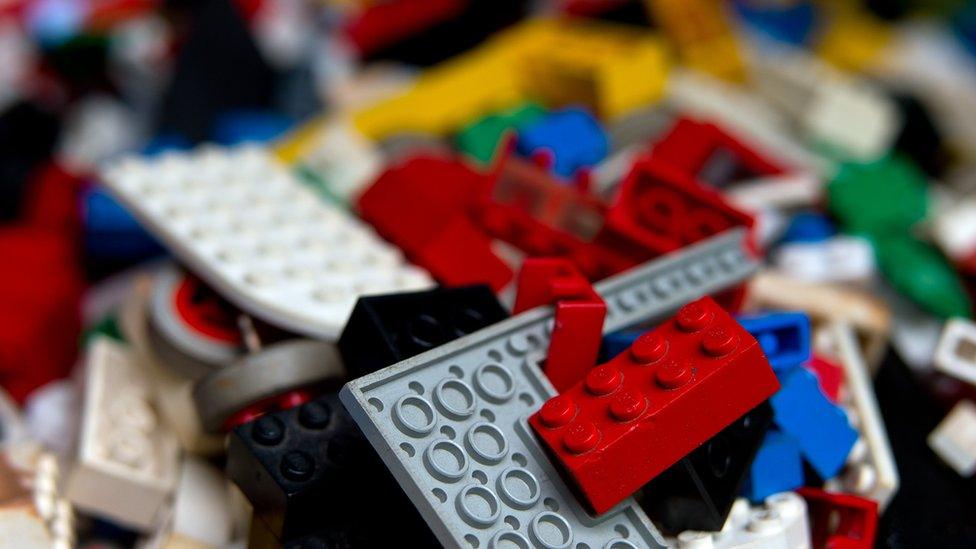Art disasters: Boy reduces £10,000 Lego statue to rubble
- Published
A giant figure of a fox called Nick from the film Zootopia was smashed to pieces by a four-year-old Chinese boy only hours after going on display.
The statue is said to have cost more than 100,000 yuan (£10,382) and taken creator Mr Zhao three days and nights to build.
He posted before and after photos of Nick on the Sina Weibo social network.
A "no touching" sign in place at the Chinese Lego expo seems to have been of little help.


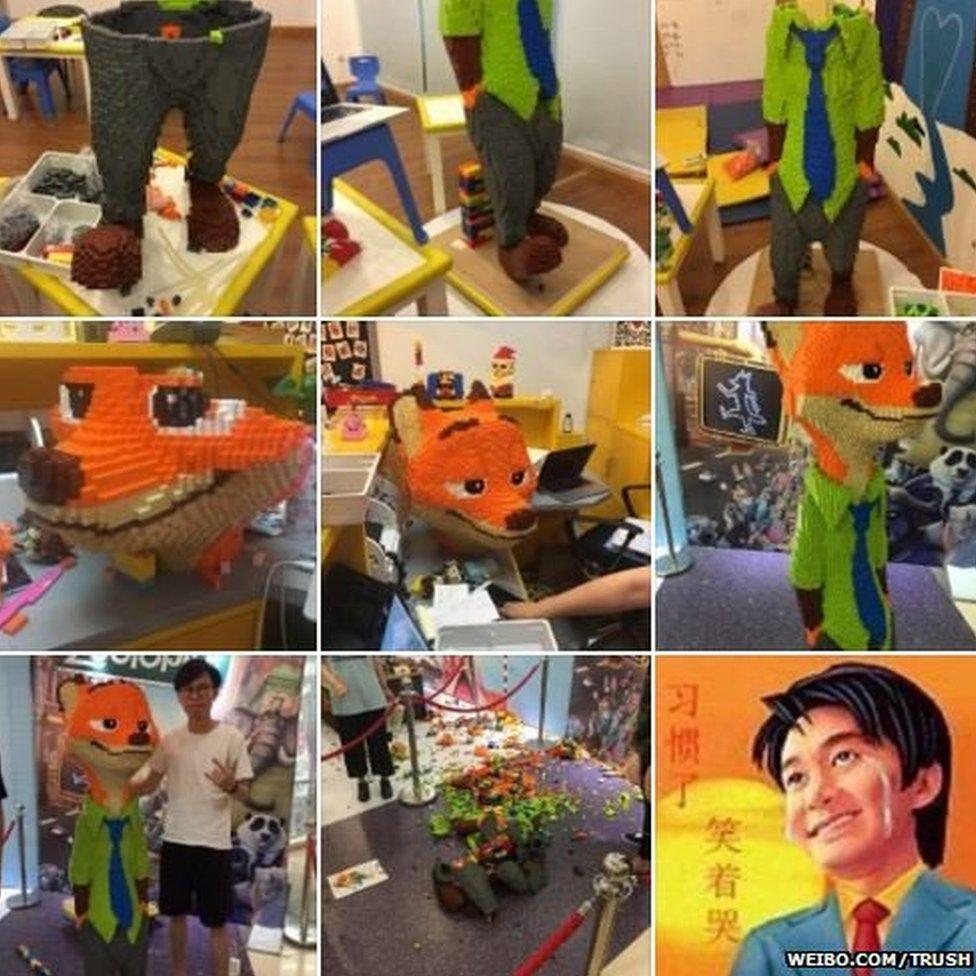
Following the incident, the hashtag #ManSpends3DaysAndNightsBuildingBlocks has been used over 13,000 times on Chinese social media.
'The child did not intend to break it'
According to some reports, the parents of the boy apologised and offered to pay for the damage, external. Mr Zhao said he would not be accepting any compensation as the young boy had not done it on purpose. "The child did not intend to break it," he insisted.
Clearly there are risks involved with art installations and paintings that are within touching distance of little (and big) hands.
Last month CCTV caught two young boys, external who were seen touching and pulling the delicate angel wings of a piece in the Shanghai Museum of Glass in China. The two adults accompanying them were seen filming the boys on their phones then walking away after the wings were smashed.
The artist, Shelly Xue, called her work Angel in Waiting. It took 27 months to build as a dedication to her newborn daughter.
Shelly decided not to fix the damaged piece and instead renamed it Broken.
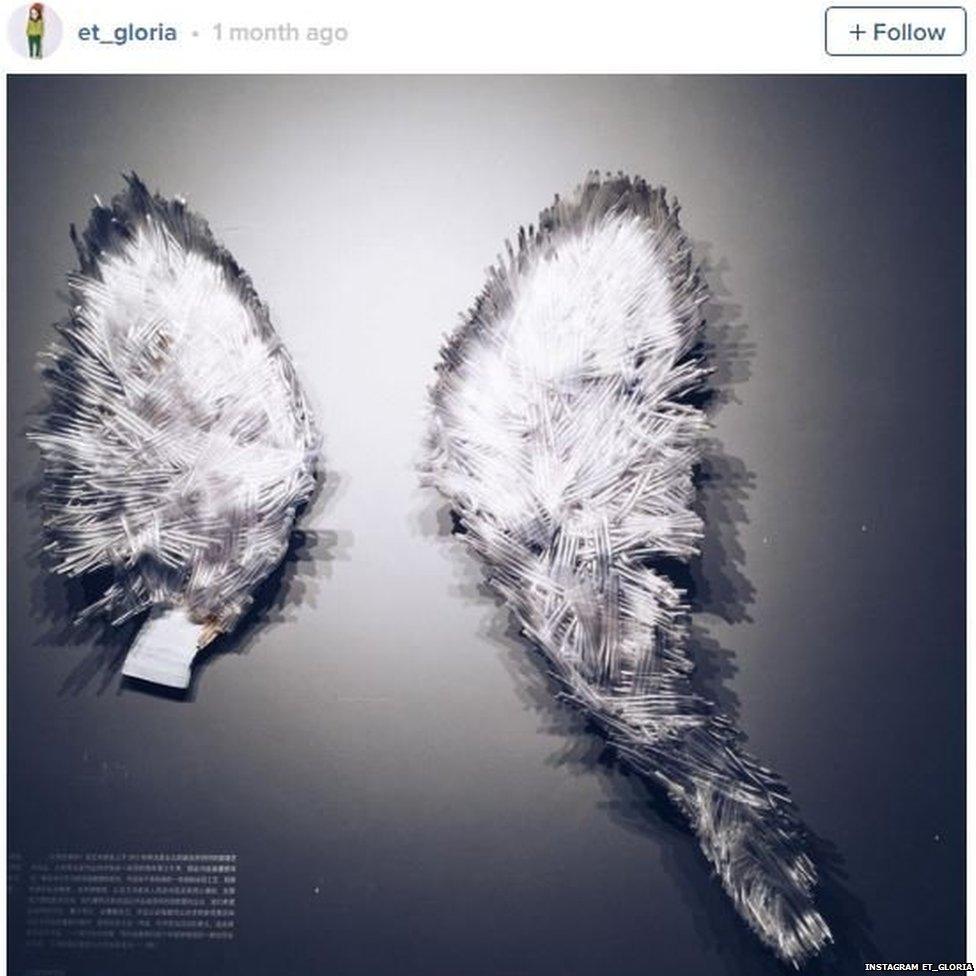
In 2015, a boy visiting a museum in Ipswich accidently smashed an 18th Century jug.
The Delftware puzzle was broken into about 65 pieces. Each of the pieces was then logged and photographed. The jug was eventually repaired and moved to Ipswich Museum and Art Gallery in the High Street.
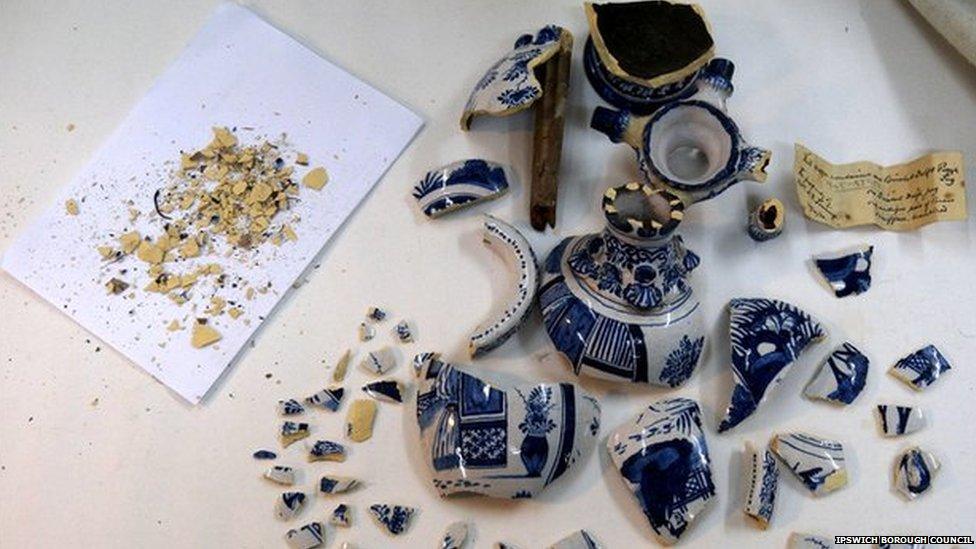
Each of the 65 pieces of the jug was logged and photographed as part of the repair project

A puzzle jug has three spouts - so users have to guess from which water will pour
It is not just children who are to blame for the accidental destruction of museum pieces.
In 2006, an adult visitor tripped over his shoelace and destroyed three 300-year-old Chinese Qing Dynasty vases in Fitzwilliam Museum in Cambridge, external in the UK.
Casino Tycoon and art collector Steve Wynn accidently elbowed a painting by Pablo Picasso, external while trying to sell it in 2006. However, after restoration he was able to sell the painting for $16 million more than its pre-accident price.
In 2015, cleaners at the Museion museum in Bolzano, Italy decided to clean up what they mistook for the aftermath of a good time had by museum staff.
The installation called, "Where shall we go dancing tonight?" consisted of empty bottles, confetti, cigarette butts and paper streamers. Cleaners threw objects into bin bags assuming the mess was left over from an actual party.

In 2012, an elderly parishioner stunned Spanish cultural officials with an alarming and unauthorised attempt to restore a prized Jesus Christ fresco.
Ecce Homo (Behold the Man) by Elias Garcia Martinez had held pride of place in the Sanctuary of Mercy Church near Zaragoza for more than 100 years.
Cecilia Gimenez took her brush to it after years of deterioration due to moisture - but her "restoration" rather failed to impress.
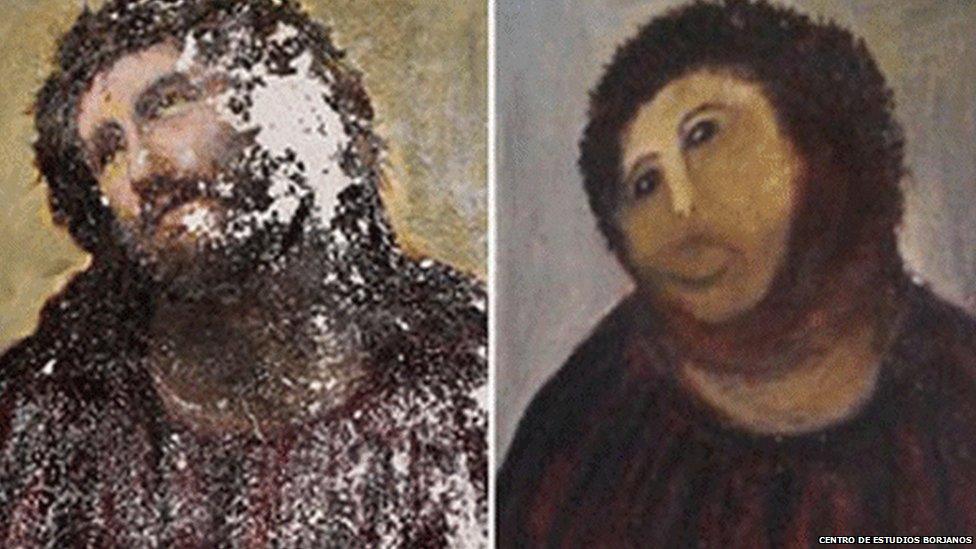
Elias Garcia Martinez's Ecce Homo (left) and the "restoration"
- Published26 August 2015
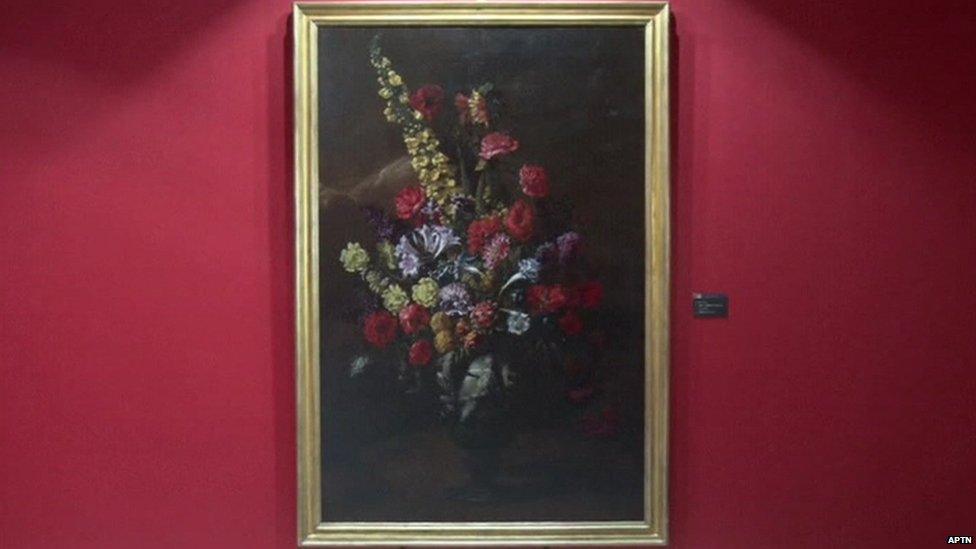
- Published28 April 2016
